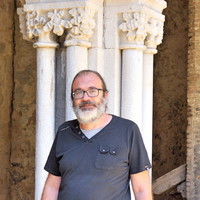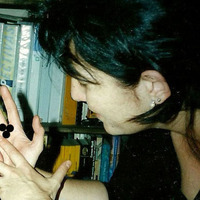
Ramon Grau i Fernández
Barcelona, 1947. Veterano historiador, ex-profesor universitario (Departamento de Geografía de la Universidad de Barcelona, 1970-1987) y funcionario municipal jubilado en 2012. Sigo en activo (en la medida de mis fuerzas). Mis intereses profesionales versan principalmente sobre mi ciudad, Barcelona, su historia y su historiografía. Claro que para entender a Barcelona, hay que tener en cuenta las corrientes universales que recogen y desarrollan sus creadores.
En 1994 tuve la suerte de ser nombrado por el alcalde Pasqual Maragall para desarrollar tareas de divulgación e investigación sobre el campo en que me había especializado previamente, y hacerlo en el marco del Instituto Municipal de Historia primero y, cuando éste fue suprimido, en el del Archivo Histórico de la Ciudad de Barcelona: coordinación de Congresos, organización de cursos monográficos, dirección de publicaciones periódicas, edición de libros, asesorías varias...
En perspectiva, me doy cuenta de que, en diferentes etapas de mi carrera, me he visto impulsado a volver repetidamente sobre la obra de tres creadores intelectuales con fuerte impacto en la ciudad. Por orden cronológico: Antonio de Capmany (1742-1813), Ildefonso Cerdà (1816-1876) y Jaime Vicens Vives (1910-1960). A cada uno de ellos he dedicado un curso monográfico en el Archivo Histórico entre 2009 y 2014. Las razones externas para ocuparme de ellos han variado a lo largo de los años (actividad docente, invitaciones de colegas e instituciones...), pero el enfoque ha sido constante. Siempre me he esforzado en comprender sus intenciones a partir de sus escritos, antes de proceder a críticas externas. Constato ahora que en mis primeros trabajos el principal esfuerzo iba dirigido a situar a los autores en sus coordenadas históricas, mientras que en los más recientes se hace más patente el esfuerzo analítico, a veces llegando a diagnósticos que a algunos oyentes o lectores han parecido duros.
Antes de la pandemia de covid-19, estuve trabajando preferentemente en el estudio de Salvador Sanpere i Miquel (1840-1915), que, a mi juicio, compone con Capmany y Vicens la gran trilogía de los historiadores sobre una época clave para la imagen de Barcelona: la Baja Edad Media.
Actualmente (año 2023) estoy en proceso de edición de una compilación de algunos de mis escritos sobre historia de Barcelona, bajo el título general "Les opcions de Barcelona", en cuatro volúmenes: 1. Els historiadors i els mites de la ciutat. 2. El segle de Capmany. 3. El segle de Cerdà. 4. La ciutat i la resiliència.
Barcelona, 1947. Veteran historian, former university professor (Department of Geography of the University of Barcelona, 1970-1987) and retired municipal official in 2012. I am still active (to the best of my strength). My professional interests are mainly about my city, Barcelona, its history and its historiography. Of course, to understand Barcelona, you have to take into account the universal currents that its creators collect and develop.
In 1994 I was fortunate to be appointed by Mayor Pasqual Maragall to carry out dissemination and research on the field in which I had previously specialized, and to do so within the Municipal Institute of History first and, when it was abolished, in the Historical Archive of the City of Barcelona: congress coordination, organization of monographic courses, direction of periodical publications, book publishing, various consultancies ...
In perspective, I realize that, at different stages of my career, I have been driven to return repeatedly to the work of three intellectual creators with a strong impact on the city. In chronological order: Antoni de Capmany (1742-1813), Ildefons Cerdà (1816-1876) and Jaume Vicens i Vives (1910-1960). To each of them I have dedicated a monographic course in the Historical Archive between 2009 and 2014. The external reasons for dealing with them have varied over the years (teaching activity, invitations from colleagues and institutions ...), but the focus has been constant. I have always endeavored to understand their intentions from their writings, before proceeding to external criticism. I now see that in my first works the main effort was aimed at placing the authors in their historical coordinates, while in the most recent ones the analytical effort becomes more evident, sometimes reaching diagnoses that have seemed hard to some listeners or readers .
Before the covid-19 pandemic, I was preferably working on the study of Salvador Sanpere i Miquel (1840-1915), which, in my opinion, composes with Capmany and Vicens the great trilogy of historians about a key era for the image of Barcelona: the Low Middle Ages.
Currently (2023) I am in the process of publishing a compilation of some of my writings on the history of Barcelona, under the general title "The options of Barcelona", in four volumes: 1. The historians and the myths of the city. 2. The Century of Capmany. 3. The Century of Cerdà. 4. The city and resilience.
En 1994 tuve la suerte de ser nombrado por el alcalde Pasqual Maragall para desarrollar tareas de divulgación e investigación sobre el campo en que me había especializado previamente, y hacerlo en el marco del Instituto Municipal de Historia primero y, cuando éste fue suprimido, en el del Archivo Histórico de la Ciudad de Barcelona: coordinación de Congresos, organización de cursos monográficos, dirección de publicaciones periódicas, edición de libros, asesorías varias...
En perspectiva, me doy cuenta de que, en diferentes etapas de mi carrera, me he visto impulsado a volver repetidamente sobre la obra de tres creadores intelectuales con fuerte impacto en la ciudad. Por orden cronológico: Antonio de Capmany (1742-1813), Ildefonso Cerdà (1816-1876) y Jaime Vicens Vives (1910-1960). A cada uno de ellos he dedicado un curso monográfico en el Archivo Histórico entre 2009 y 2014. Las razones externas para ocuparme de ellos han variado a lo largo de los años (actividad docente, invitaciones de colegas e instituciones...), pero el enfoque ha sido constante. Siempre me he esforzado en comprender sus intenciones a partir de sus escritos, antes de proceder a críticas externas. Constato ahora que en mis primeros trabajos el principal esfuerzo iba dirigido a situar a los autores en sus coordenadas históricas, mientras que en los más recientes se hace más patente el esfuerzo analítico, a veces llegando a diagnósticos que a algunos oyentes o lectores han parecido duros.
Antes de la pandemia de covid-19, estuve trabajando preferentemente en el estudio de Salvador Sanpere i Miquel (1840-1915), que, a mi juicio, compone con Capmany y Vicens la gran trilogía de los historiadores sobre una época clave para la imagen de Barcelona: la Baja Edad Media.
Actualmente (año 2023) estoy en proceso de edición de una compilación de algunos de mis escritos sobre historia de Barcelona, bajo el título general "Les opcions de Barcelona", en cuatro volúmenes: 1. Els historiadors i els mites de la ciutat. 2. El segle de Capmany. 3. El segle de Cerdà. 4. La ciutat i la resiliència.
Barcelona, 1947. Veteran historian, former university professor (Department of Geography of the University of Barcelona, 1970-1987) and retired municipal official in 2012. I am still active (to the best of my strength). My professional interests are mainly about my city, Barcelona, its history and its historiography. Of course, to understand Barcelona, you have to take into account the universal currents that its creators collect and develop.
In 1994 I was fortunate to be appointed by Mayor Pasqual Maragall to carry out dissemination and research on the field in which I had previously specialized, and to do so within the Municipal Institute of History first and, when it was abolished, in the Historical Archive of the City of Barcelona: congress coordination, organization of monographic courses, direction of periodical publications, book publishing, various consultancies ...
In perspective, I realize that, at different stages of my career, I have been driven to return repeatedly to the work of three intellectual creators with a strong impact on the city. In chronological order: Antoni de Capmany (1742-1813), Ildefons Cerdà (1816-1876) and Jaume Vicens i Vives (1910-1960). To each of them I have dedicated a monographic course in the Historical Archive between 2009 and 2014. The external reasons for dealing with them have varied over the years (teaching activity, invitations from colleagues and institutions ...), but the focus has been constant. I have always endeavored to understand their intentions from their writings, before proceeding to external criticism. I now see that in my first works the main effort was aimed at placing the authors in their historical coordinates, while in the most recent ones the analytical effort becomes more evident, sometimes reaching diagnoses that have seemed hard to some listeners or readers .
Before the covid-19 pandemic, I was preferably working on the study of Salvador Sanpere i Miquel (1840-1915), which, in my opinion, composes with Capmany and Vicens the great trilogy of historians about a key era for the image of Barcelona: the Low Middle Ages.
Currently (2023) I am in the process of publishing a compilation of some of my writings on the history of Barcelona, under the general title "The options of Barcelona", in four volumes: 1. The historians and the myths of the city. 2. The Century of Capmany. 3. The Century of Cerdà. 4. The city and resilience.
less
Related Authors
Ricard Torra-Prat
Universitat Autònoma de Barcelona
Pere Verdes Pijuan
CSIC (Consejo Superior de Investigaciones Científicas-Spanish National Research Council)
Pere Orti Gost
Universitat de Girona
Pol Serrahima Balius
Universitat de Lleida
Albert Reixach
Universitat de Lleida
Eduard Martí-Fraga
Universidad internacional de La Rioja
Laura Miquel Milian
Universitat de València
Montserrat Berdún Colom
Universitat de Barcelona
InterestsView All (6)










Uploads
Artículos/Capítulos by Ramon Grau i Fernández
El gran èxit vital d’Ildefons Cerdà va ser deixar una empremta indeleble en la forma urbana de Barcelona. Encara que les seves manifestacions escrites transmeten una seguretat aparentment impertorbable, aquest triomf fou degut a la seva capacitat d’aprofitar les oportunitats conjunturals, fixar prioritats per a cada etapa i anar millorant i rectificant fins i tot els seus plantejaments.
El gran éxito vital de Ildefonso Cerdà fue dejar una impronta indeleble en la forma urbana de Barcelona. Aunque sus manifestaciones escritas transmiten una seguridad aparentemente imperturbable, ese triunfo se debió a su capacidad de aprovechar las oportunidades coyunturales, fijar prioridades para cada etapa e ir mejorando y rectificando incluso sus propios planteamientos.
The great vital success of Ildefonso Cerdà was to leave an indelible mark on the urban form of Barcelona. Although his written statements convey an apparently imperturbable security, this triumph was due to his ability to take advantage of current opportunities, set priorities for each stage and gradually improve and rectify even his own approaches.
Abstract: The intellectual coherence of Antonio de Capmany in his writings of political intention between 1770 and 1813 is especially overwhelming considering the changes in the historical context: stage of greatest influence of the Enlightenment on the Spanish absolutist regime, involution generated by the impact of the French Revolution, Napoleonic military occupation and patriotic resistance. However, his conception of Spain as a nation of nations and his emphasis on the contribution of the Catalan and Aragonese political tradition to the constitutional re-founding of the State were not appreciated at that time either by liberals or absolutists, nor by successive generations of Spanish nationalists until our days. On the other hand, its prestige in Catalonia also paled from the beginning of the 20th century, as Catalanism drifted towards an exclusive nationalism. Perhaps its relegation is a good indicator of the persistent difficulties in building a modern and inclusive state in Spain.
Antonio de Capmany: el primer modelo del pensamiento político catalán moderno
Resumen: La coherencia intelectual de Antonio de Capmany en sus escritos de intención política entre 1770 y 1813 resulta especialmente abrumadora teniendo en cuenta los cambios del contexto histórico: etapa de mayor influencia de la Ilustración sobre el régimen absolutista español, involución generada por el impacto de la Revolución Francesa, ocupación militar napoleónica y resistencia patriótica. Sin embargo, su concepción de España como nación de naciones y su énfasis en la aportación de la tradición política catalana y aragonesa a la refundación constitucional del Estado no fueron apreciados entonces ni por liberales ni por absolutistas, ni por las sucesivas generaciones de nacionalistas españoles hasta nuestros días. Por otro lado, su prestigio en Cataluña palideció también desde principios del siglo XX, a medida que el catalanismo derivó hacia un nacionalismo exclusivo. Quizás su relegación sea un buen indicador de las persistentes dificultades para construir un Estado moderno e integrador en España.
In Antoni de Capmany’s Memorias históricas (1779), the history of Barcelona and Catalonia appears divided between a “past” spotlighting a glorious Middle Ages and a “present” arising wirh the economic renaissance of the 18th century. Regarding the turmoil that separated the two eras (the fall of the city into the hands of Philip V in 1714), the economic success following the coup tipped that enlightened historian and his nineteenth-century epigones –including Joan Illas i Vidal (1848), Andreu Avel·lí Pi i Arimon (1850) and Josep Anton Llobet i Vall-llosera (1856)– to leave in the background the romantic longing for heroic times, increasingly stereotyped, and to accept the concentration of power political as a traumatic toll to access modernity. The positivist Salvador Sanpere i Miquel (1877), a critic of the sterile idealizations of the past, inaugurated a new historiographical cycle that announces the constructive pragmatism of Enric Prat de la Riba, the political father of contemporary Catalonia.
Los historiadores ochocentistas de Barcelona y la derrota de 1714. Un plato de difícil digestión.
En las Memorias históricas de Antoni de Capmany (1779), la historia de Barcelona y de Cataluña aparece dividida entre un “pasado” centrado en una gloriosa Edad Media y un “presente” originado en el renacimiento económico del siglo XVIII. Respecto al trance que separa las dos épocas (la caída de la ciudad en manos de Felipe V en 1714), el éxito económico subsiguiente al golpe inclinó aquel historiador ilustrado y sus epígonos decimonónicos –entre ellos, Joan Illas i Vidal (1848), Andrés Avel·lí Pi i Arimón (1850) y Josep Anton Llobet i Vall-llosera (1856)– a dejar en segundo plano la añoranza romántica de la época heroica, cada vez más estereotipada, y a aceptar la concentración del poder político como un peaje traumático para acceder a la modernidad. El positivista Salvador Sanpere y Miquel (1877), crítico con las estériles idealizaciones del pasado, inauguró un nuevo ciclo historiográfico que anuncia el pragmatismo constructivo de Enric Prat de la Riba, padre político de la Cataluña contemporánea.
El gran èxit vital d’Ildefons Cerdà va ser deixar una empremta indeleble en la forma urbana de Barcelona. Encara que les seves manifestacions escrites transmeten una seguretat aparentment impertorbable, aquest triomf fou degut a la seva capacitat d’aprofitar les oportunitats conjunturals, fixar prioritats per a cada etapa i anar millorant i rectificant fins i tot els seus plantejaments.
El gran éxito vital de Ildefonso Cerdà fue dejar una impronta indeleble en la forma urbana de Barcelona. Aunque sus manifestaciones escritas transmiten una seguridad aparentemente imperturbable, ese triunfo se debió a su capacidad de aprovechar las oportunidades coyunturales, fijar prioridades para cada etapa e ir mejorando y rectificando incluso sus propios planteamientos.
The great vital success of Ildefonso Cerdà was to leave an indelible mark on the urban form of Barcelona. Although his written statements convey an apparently imperturbable security, this triumph was due to his ability to take advantage of current opportunities, set priorities for each stage and gradually improve and rectify even his own approaches.
Abstract: The intellectual coherence of Antonio de Capmany in his writings of political intention between 1770 and 1813 is especially overwhelming considering the changes in the historical context: stage of greatest influence of the Enlightenment on the Spanish absolutist regime, involution generated by the impact of the French Revolution, Napoleonic military occupation and patriotic resistance. However, his conception of Spain as a nation of nations and his emphasis on the contribution of the Catalan and Aragonese political tradition to the constitutional re-founding of the State were not appreciated at that time either by liberals or absolutists, nor by successive generations of Spanish nationalists until our days. On the other hand, its prestige in Catalonia also paled from the beginning of the 20th century, as Catalanism drifted towards an exclusive nationalism. Perhaps its relegation is a good indicator of the persistent difficulties in building a modern and inclusive state in Spain.
Antonio de Capmany: el primer modelo del pensamiento político catalán moderno
Resumen: La coherencia intelectual de Antonio de Capmany en sus escritos de intención política entre 1770 y 1813 resulta especialmente abrumadora teniendo en cuenta los cambios del contexto histórico: etapa de mayor influencia de la Ilustración sobre el régimen absolutista español, involución generada por el impacto de la Revolución Francesa, ocupación militar napoleónica y resistencia patriótica. Sin embargo, su concepción de España como nación de naciones y su énfasis en la aportación de la tradición política catalana y aragonesa a la refundación constitucional del Estado no fueron apreciados entonces ni por liberales ni por absolutistas, ni por las sucesivas generaciones de nacionalistas españoles hasta nuestros días. Por otro lado, su prestigio en Cataluña palideció también desde principios del siglo XX, a medida que el catalanismo derivó hacia un nacionalismo exclusivo. Quizás su relegación sea un buen indicador de las persistentes dificultades para construir un Estado moderno e integrador en España.
In Antoni de Capmany’s Memorias históricas (1779), the history of Barcelona and Catalonia appears divided between a “past” spotlighting a glorious Middle Ages and a “present” arising wirh the economic renaissance of the 18th century. Regarding the turmoil that separated the two eras (the fall of the city into the hands of Philip V in 1714), the economic success following the coup tipped that enlightened historian and his nineteenth-century epigones –including Joan Illas i Vidal (1848), Andreu Avel·lí Pi i Arimon (1850) and Josep Anton Llobet i Vall-llosera (1856)– to leave in the background the romantic longing for heroic times, increasingly stereotyped, and to accept the concentration of power political as a traumatic toll to access modernity. The positivist Salvador Sanpere i Miquel (1877), a critic of the sterile idealizations of the past, inaugurated a new historiographical cycle that announces the constructive pragmatism of Enric Prat de la Riba, the political father of contemporary Catalonia.
Los historiadores ochocentistas de Barcelona y la derrota de 1714. Un plato de difícil digestión.
En las Memorias históricas de Antoni de Capmany (1779), la historia de Barcelona y de Cataluña aparece dividida entre un “pasado” centrado en una gloriosa Edad Media y un “presente” originado en el renacimiento económico del siglo XVIII. Respecto al trance que separa las dos épocas (la caída de la ciudad en manos de Felipe V en 1714), el éxito económico subsiguiente al golpe inclinó aquel historiador ilustrado y sus epígonos decimonónicos –entre ellos, Joan Illas i Vidal (1848), Andrés Avel·lí Pi i Arimón (1850) y Josep Anton Llobet i Vall-llosera (1856)– a dejar en segundo plano la añoranza romántica de la época heroica, cada vez más estereotipada, y a aceptar la concentración del poder político como un peaje traumático para acceder a la modernidad. El positivista Salvador Sanpere y Miquel (1877), crítico con las estériles idealizaciones del pasado, inauguró un nuevo ciclo historiográfico que anuncia el pragmatismo constructivo de Enric Prat de la Riba, padre político de la Cataluña contemporánea.
Abstract: This conference, enlarged with notes and documentary appendix, situates the start of Capmany's contributions to Catalan and Spanish political thought in the context of the crisis in relations between Catalan society and the monarchy caused by resistance to the implantation of a compulsory military service ordered by Carlos III de Borbón. The clear implication of the workers and entrepreneurs of the emerging Barcelona cotton industry in the riot against the military draw in May 1773 motivated the slogan of de-urbanizing the industry launched by Pedro Rodríguez Campomanes in his Discurso sobre el fomento de la industria popular of 1774. The immediate response of Capmany in defense of the urban economy, of the economic corporations and of the political function of commons in his Discurso político económico concentrates his criticisms on the purely speculative character of the Campomanes theory. By supporting the defense of historical structures in empirical arguments, Capmany managed to give a modern image of the Catalan claims and, even, to propose the Catalan economy as a model for the general development of Spain.
Antonio de Capmany y la renovación del historicismo político catalán.
Resumen: Esta conferencia, ampliada con notas y apéndice documental, sitúa el arranque de las aportaciones de Capmany al pensamiento político catalán y español en el contexto de la crisis de las relaciones entre la sociedad catalana y la monarquía ocasionada por la resistencia a la implantación de un servicio militar obligatorio ordenada por Carlos III de Borbón. La clara implicación de los trabajadores y empresarios de la emergente manufactura algodonera barcelonesa en el motín contra el sorteo militar en mayo de 1773 motivó la consigna de desurbanizar la industria lanzada por Pedro Rodríguez Campomanes en su Discurso sobre el fomento de la industria popular de 1774. La inmediata respuesta de Capmany en defensa de la economía urbana, de las corporaciones económicas y de la función política del estamento popular en su Discurso político económico concentra sus críticas en el carácter puramente especulativo de la teoría de Campomanes. Al apoyar la defensa de las estructuras históricas en argumentos empíricos, Capmany consiguió dar una imagen moderna de las reivindicaciones catalanas e, incluso, proponer la economía catalana como modelo para el desarrollo general de España.
Abstract: This brief text is the introduction to a monographic section of the magazine "L'Avenç" where five specialists examine the efforts developed in the nineteenth and twentieth centuries to value and preserve medieval works of art, as well as the ideological context of that process.
El estilo nacional: ¿románico o gótico?
Resumen: Este breve texto es la introducción a una sección monográfica de la revista «L’Avenç» donde cinco especialistas examinan los esfuerzos desarrollados en los siglos XIX y XX para valorar y preservar las obras de arte medieval, así como el contexto ideológico de ese proceso.
Abstract: This brief text is the introduction to a monographic section of the magazine «L'Avenç» where six specialists in Catalan intellectual history examine the thinking of a chain of authors characterized by their optimistic vision in relation to the Catalan urbanization process, centered on the city of Barcelona: Antonio de Capmany, Jaime Balmes, Ildefonso Cerdà, Salvador Sanpere and Miquel, Pedro Estasén, Ildefonso Sunyol and Carlos Pi i Sunyer. The presentation emphasizes the criticism of Barcelona's growth as a factor of imbalance in Catalonia, formulated mainly by José Antonio Vandellós.
Una tradición intelectual optimista. Seis reflexiones desde Barcelona (1780-1936)
Resumen: Este breve texto es la introducción a una sección monográfica de la revista «L’Avenç» donde seis especialistas en historia intelectual catalana examinan el pensamiento de una cadena de autores caracterizados por su visión optimista en relación con el proceso urbanizador catalán, centrado en la ciudad de Barcelona: Antonio de Capmany, Jaime Balmes, Ildefonso Cerdà, Salvador Sanpere i Miquel, Pedro Estasén, Ildefonso Sunyol i Carlos Pi i Sunyer. En la presentación se pone el énfasis en la crítica al crecimiento barcelonés como factor de desequilibrio de Cataluña formulada principalmente por José Antonio Vandellós.